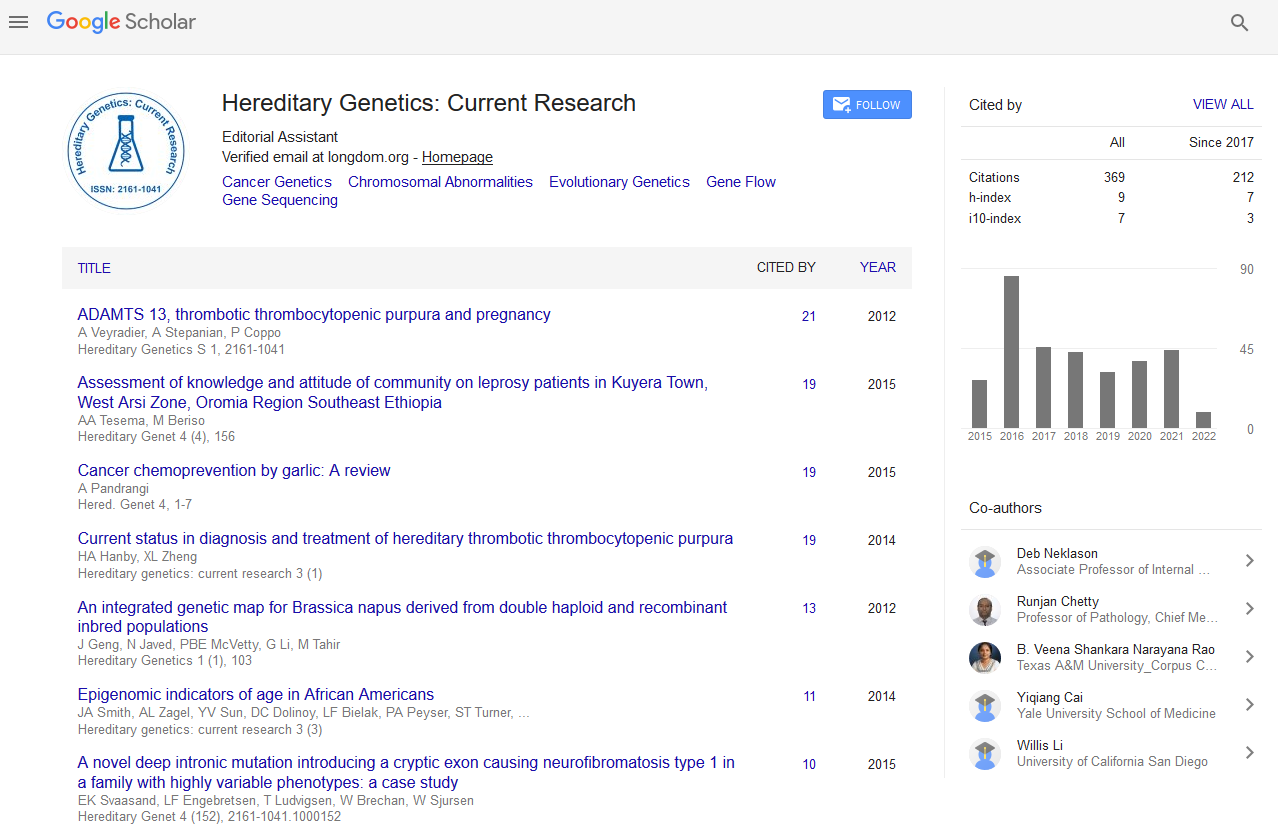PMC/PubMed Indexed Articles
Indexed In
- Open J Gate
- Genamics JournalSeek
- CiteFactor
- RefSeek
- Hamdard University
- EBSCO A-Z
- NSD - Norwegian Centre for Research Data
- OCLC- WorldCat
- Publons
- Geneva Foundation for Medical Education and Research
- Euro Pub
- Google Scholar
Useful Links
Share This Page
Journal Flyer

Open Access Journals
- Agri and Aquaculture
- Biochemistry
- Bioinformatics & Systems Biology
- Business & Management
- Chemistry
- Clinical Sciences
- Engineering
- Food & Nutrition
- General Science
- Genetics & Molecular Biology
- Immunology & Microbiology
- Medical Sciences
- Neuroscience & Psychology
- Nursing & Health Care
- Pharmaceutical Sciences
Abstract
Familial Aggregation of Hypercholesterolemia in Pakistani Population
Fauzia Imtiaz and Ahsan A. Vahidy
Objectives: To estimate the familial aggregation of hypercholesterolemia among Pakistani population live in the metropolitan area Karachi.
Methods: The present study was conducted during the period of 2007 to 2009 on the sample population of Karachi Pakistan. In the present study, 478 family members (age ranges from 20 to 65 years), from ten-hypercholesterolemic probands (Cholesterol level > 300 mg/dl) were studied and their serum cholesterol level was estimated to see the familial aggregation of the disease. The clinical examination was also performed to see the presence of tandinous xanthmata, xanthelesma, arcus cornea and polyarthritis.
Results: Parent-offspring correlation and heritability is calculated by using the statistical package for social sciences (SPSS) version 16.0. A significant positive correlation of cholesterol was found among parents and their offspring (r=0.589, p=0.01, n=86). Relationship between father–son, father–daughter, mother–son and mother–daughter were highly significant with b= 0.794, 0.41, 0.766 and 0.56 respectively. This study confirmed the familial aggregation of serum cholesterol level in Pakistani population and the heritability was calculated as 0.438 (43.8%).
Conclusion: The heritability of hypercholesterolemia and their clinical presentation was studied in the families which confirmed its familial aggregation in Pakistani population.


